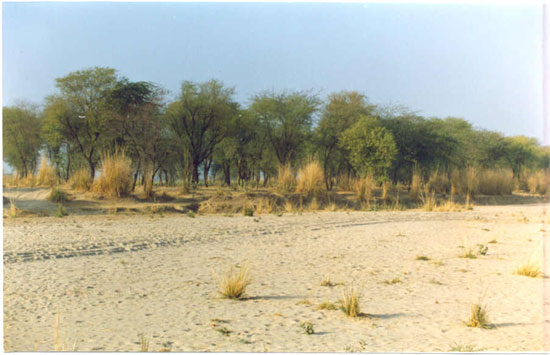Rajasthan is the state with highest area under desertification ( land degradation) with respect to country’s total geographical area (TGA). The state has 62.90% of the TGA under desertification/ land degradation for the period of 2011-13. The area of desertification in Rajasthan has decreased about 0.29% since 2003-05.
Definitions & Differences:
Soil Degradation
- Soil degradation is the decline in soil quality caused by its improper use, usually for agricultural, pastoral, industrial or urban purposes.
- Soil degradation is a serious global environmental problem and may be exacerbated by climate change. It encompasses physical (soil erosion), chemical (salinity and alkalinity, pollution) and biological deterioration (pollution and deterioration of vegetal cover).
Soil Erosion
- Soil erosion is the removal of top soil by agents like wind and water.
- Top soil has most of the nutrients necessary for a plant’s growth. With depth, the fertility of the soil decreases. Thus, erosion results in reduction of fertility of the soil by washing away the fertile top layer.
Desertification
- UNCCD defines desertification as ‘land-degradation in arid, semi-arid and sub-humid areas resulting from various factors including climatic variations and human activities’.
- Loss of soil cover, mainly due to rainfall and surface runoff, is one of the biggest reasons for desertification.
Problems of Soils in Rajasthan
The degree of degradation and its severity are influenced by special variability and its niche with the surrounding. The terrain factors like slope, aspect, topographic position are found to be dominant factor while intensity and distribution of rainfall are climatic factors, determining the extent and severity of degradation.

Wind Erosion & Shifting Sand Dunes:
- Wind Erosion is the most significant cause of land degradation/desertification in Rajasthan.
- The wind erosion is playing a prominent role, in the western flank of the state and is found active with full force in the core of desert, causing sand blasting, sand drifting, which results active dunes and interduneal plains.
Water Erosion
- Severity of water erosion is found at the peak in central highland, including Aravalli landscape and Bundelkhand upland.
- This causes loss of top soils through sheet and rill erosion.
- It also causes terrain deformation through gully and ravine land. Example: Ravine Lands along the Chambal River & its tributaries.
Water Logging:
- With the introduction of canal irrigation system water table of the area is rising at an average rate of about 0.8 m per year.
- As a result of this large area has become water-logged and this area is increasing every year, it is a serious problem particularly in deep black soils.
Sodicity of Soil:
- Sodality of the soil and high residual sodium carbonate content of irrigation water are the main problems.
Salinity & Alkalinity:
- The Salinity & Alkalinity is found maximum in the Aravalli and Bundelkhand alluvial plains where the quality of ground water and poor management practices about the secondary salinization.
- Salinity is due to high permanent water table.
